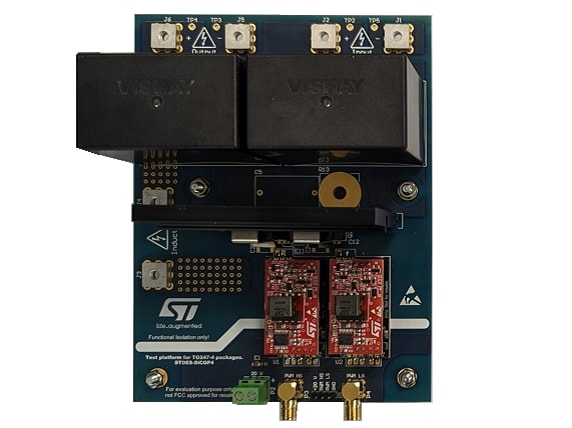Fast and easy performance evaluation of STPOWER SiC MOSFETs in an HiP247-4 (four leads) package
Fast and easy performance evaluation of STPOWER SiC MOSFETs in an HiP247-4 (four leads) package
This reference design allows evaluation of the switching and thermal performance of power SiC MOSFETs in a HiP247-4 (four leads) package in half-bridge topology.The design includes the necessary elements to implement a double pulse testing (DPT) environment and explore silicon carbide operation in buck or boost configuration. This testing platform is a valuable tool for optimizing designs and ensuring maximum efficiency in final applications.
Key features
- Driven by the STGAP2HS galvanic isolated gate driver
- Isolated gate drivers supplied by an isolated fly-buck converter
- Preset +18 V/-3 V supply voltage for output stage of isolated gate drivers
- Low inductance sense resistor
- Coaxial shunt resistor
- 1 kV max. DC input/output voltage
- 69 A Input current level peak (duration up to 100 μs)
Key applications
Recommended resources

Getting started with the testing platform of SiC MOSFETs for HiP247-4 packages
Getting started with the testing platform of SiC MOSFETs for HiP247-4 packages
User manual
The STDES-SICGP4 is a testing platform reference design developed to test the high-speed switching performance of ST silicon carbide (SiC) MOSFETs. The platform implements a half-bridge configuration suitable for HiP247-4 packages.
STDES-SICGP4 test report
Technical note
The platform consists of a half-bridge structure featuring HiP247-4 package, along with gate driver and isolated auxiliary supply. The digital signal can be externally connected to the gate driver inputs to control MOSFETs by switching to a half-bridge structure. This kit enables testing of MOSFET switching performance using the double-pulse test (DPT) and other test scenarios.


